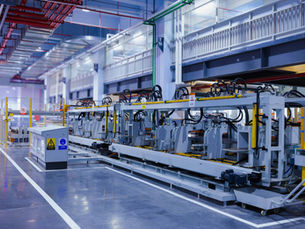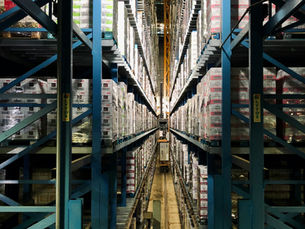top of page


Getting Started With UFactory xArm Programming Essentials: A Complete Guide for Beginners
The UFactory xArm robotic arm is transforming business automation and process improvement. As industries increasingly adopt custom robotics for efficiency, mastering the xArm’s programming essentials is critical. This guide explains the key features of the xArm, the setup process, programming languages used, and steps to program basic movements and integrate sensor feedback.
7 min read


Machine Tending Robot Solutions: How Robotic Arms and End Effectors Improve Manufacturing Efficiency
In today's competitive manufacturing environment, machine tending robots, are revolutionizing production lines by automating repetitive tasks, reducing downtime, and improving accuracy. This article explains how robotic arms and specialized end effectors work together—with technology often inspired by blue sky robotics—to boost manufacturing efficiency while cutting costs and ensuring safety.
6 min read


Affordable Robotic Arms: How Advanced Manufacturing and Streamlined Supply Chains Are Revolutionizing Robotics
In recent years, the robotics industry has undergone a remarkable transformation, making robotic arms more affordable and accessible than ever before. This breakthrough is primarily driven by advancements in manufacturing technologies and a streamlined supply chain that cuts costs without compromising quality. Affordable robotic arms are now empowering small and medium-sized businesses across diverse industries—from automotive and electronics to consumer goods and healthcare.
5 min read


Automating Palletizing: Choosing the Right End Effectors for the Job
In the age of smart manufacturing, automated palletizing has become a key application for robots across industries. Whether you're handling boxes, bags, or irregular loads, the efficiency and consistency of a robotic system depend heavily on one crucial component: the end effector. Also known as robotic EOAT (End of Arm Tooling), the end effector is the tool that actually interacts with the product—gripping, lifting, placing, or manipulating it. Choosing the right tool among
3 min read


The Biggest Challenges of Automating Food and Beverage Manufacturing
Manufacturing food and beverage products is one of the most complex and regulated processes in the industrial world. From strict safety compliance to labor shortages and rapidly shifting consumer trends, companies in this sector face constant pressure to produce efficiently, safely, and cost-effectively.
Whether you’re running a regional food brand or managing a global processing facility, here are the top challenges in automation in food manufacturing—and why solving them
3 min read


The Future of Industrial Automation: Applications, Brands, Safety Standards, and Cost
The future of industrial automation is unfolding rapidly, driven by advances in robotics, AI, and the Industrial Internet of Things...
3 min read


Automation Testing Roadmap 2025: Tools, Trends, and Cost-Effective Strategies for Scalable Quality
In 2025, automation testing is no longer optional—it's a core component of modern software development lifecycles. As development teams...
3 min read


Reinventing Daily Operations with Cobot Capable Robots
Collaborative robots (cobot capable robots) are reshaping work across industries by blending flexibility, precision, and ease of use. No longer limited to simple tasks, modern cobots adapt to changing workflows, require minimal setup, and empower workers by reducing strain and increasing efficiency. As AI advances, these smart, user-friendly systems are becoming essential tools in creating smarter, more agile workplaces.
2 min read


Future-Proofing your Business with Automation: Why “If It Ain’t Broke” Doesn’t Apply to Automation
In many manufacturing and industrial organizations, the phrase “If it ain’t broke, don’t fix it” still guides decision-making. But in a world defined by speed, scale, and innovation, that mindset may be holding businesses back, especially when it comes to automation. Automation isn’t just about solving problems, it’s about unlocking potential.
2 min read


Debunking Common Automation Myths: Part 3
Manual systems often conceal high error rates and costly inefficiencies. Even a 1% data entry error rate can lead to recalls, defects, or lost revenue. In 2023 alone, labeling mistakes caused 50% of U.S. food and beverage recalls — with an average cost of $10 million per recall.
11 min read


Debunking Common Automation Myths: Part 1
Manual systems often conceal high error rates and costly inefficiencies. Even a 1% data entry error rate can lead to recalls, defects, or lost revenue. In 2023 alone, labeling mistakes caused 50% of U.S. food and beverage recalls — with an average cost of $10 million per recall.
4 min read


AI Workforce Development: Retrain or Risk Falling Behind
As artificial intelligence becomes a driving force in modern business, one thing is clear: the workforce is changing. For small and...
2 min read
bottom of page
